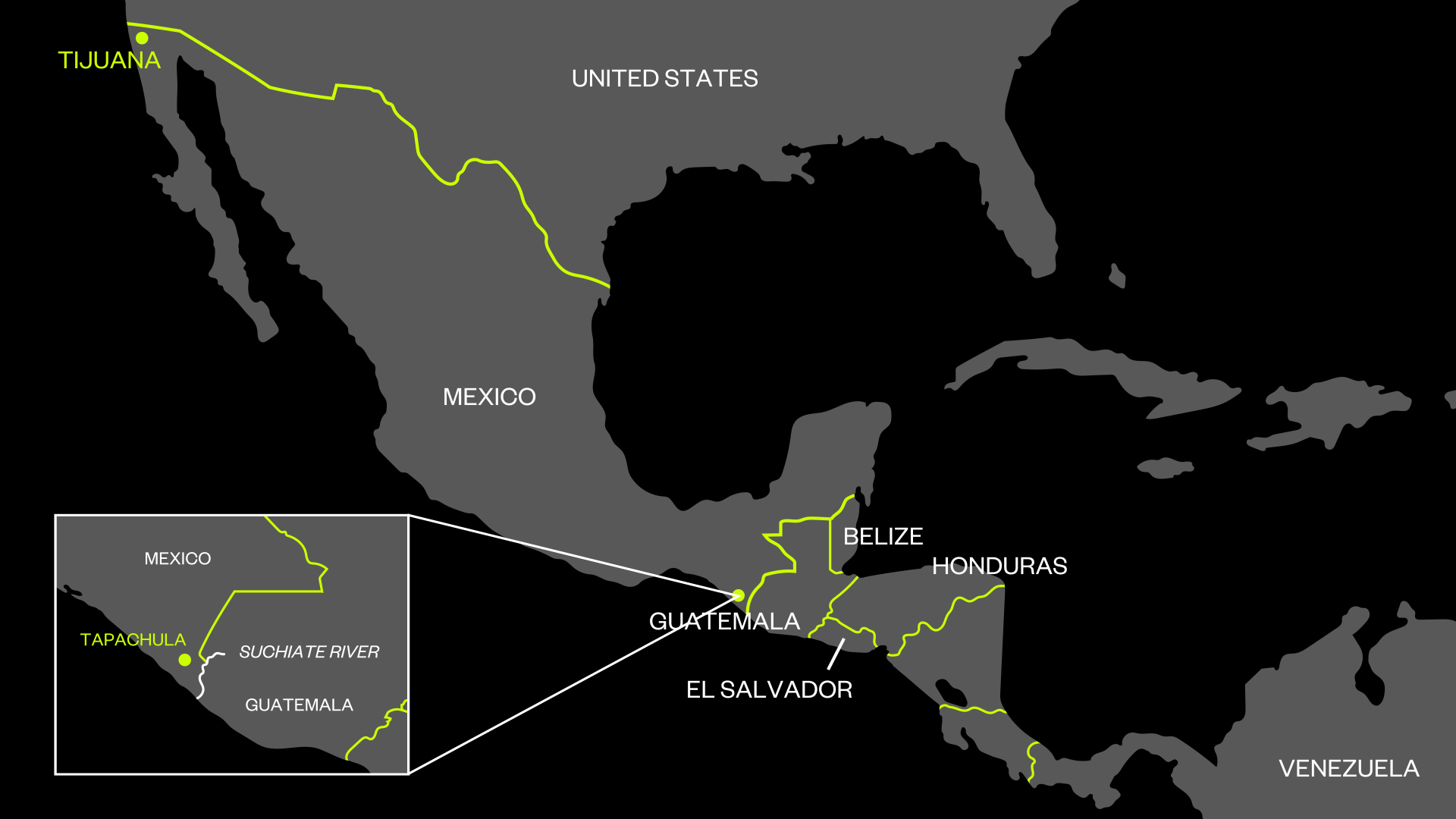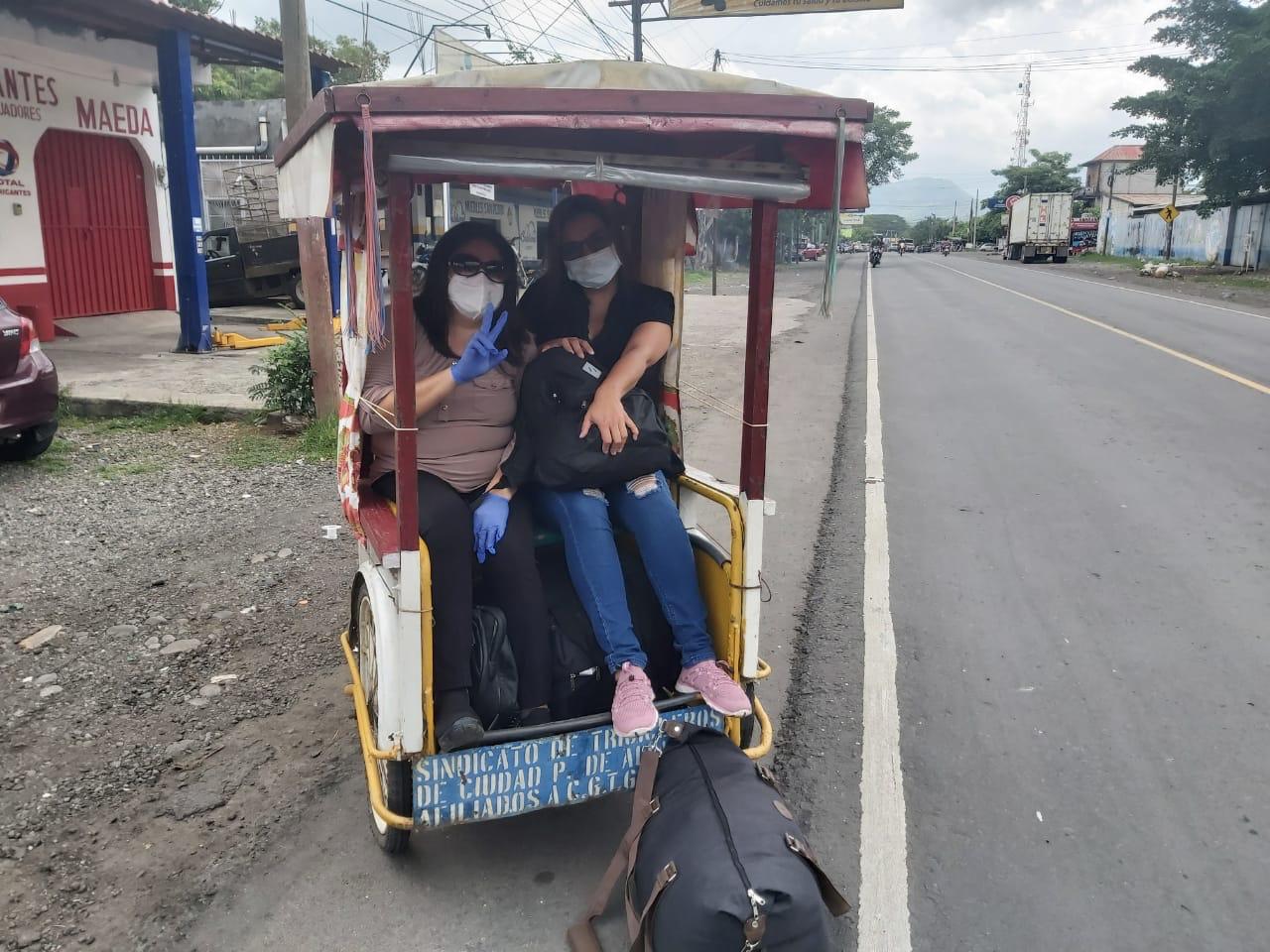Hazel Lazo was lucky. She made it to the United States from El Salvador with legal permission. That meant she didn’t have to risk the epic journey via land from Central America that some don’t survive.
But within months, because of the pandemic, she ran out of money and options in the U.S and decided to go home. And she needed a people smuggler to do it.
“I thought about all the people who want to be there, in the U.S, and they risk their lives to get there. We risked ours again, but in reverse this time, to get back to El Salvador,” she said.
Regional border closures in response to the threat of the coronavirus have generated a new migration phenomenon: migrants from Central American nations such as Honduras and El Salvador having to be smuggled home. The traditional movement of migrants moving from south to north has slowed as a result of the lockdown, with many deciding to stay home until normal life resumes. But now illegal movement is going the other way.
“It’s unlike anything we’ve ever seen before at the U.S border and in the region,” said Olga Byrne, immigration director at the International Rescue Committee (IRC), who blames United States policy for the new trend. The asylum system has all but ground to a halt since the pandemic hit, and temporary rules allow those seeking protection and undocumented migrants arriving at the US border to be returned to Mexico without any due process.
Between March and July, more than 110,000 undocumented migrants have been returned to Mexico by the United States government, the majority of them from Central America and some of them unaccompanied children, according to Byrne. Restrictions that have been in place on the U.S-Mexico border since March have also trapped thousands of Central American migrants who were on their way to the United States in Mexico.
“Some people are desperate and unable to live indefinitely in Mexican border towns awaiting litigation or other policy changes that restore their rights and offer protections, so some are returning home on their own,” Byrne said.
The closure of Guatemala’s borders to everyone but nationals has further complicated matters. Guatemala shares its northern border with Mexico, and to its south are El Salvador and Honduras. Citizens of El Salvador and Honduras can’t enter and cross Guatemala legally, so are technically trapped in Mexico.
El Salvador was one of the first countries to go into lockdown in Latin America when the global pandemic took hold. And the government had some of the strictest measures in the region in place, enforced by the military. President Nayib Bukele even closed the country’s borders to its own citizens for months, which stranded thousands abroad.

Those Salvadorans locked out of their country started calling themselves “varados,” or '“the stranded”. Facebook pages popped up where they would congregate to share experience and ideas, according to Lazo. Soon, it became clear that people were heading home by land. Many undocumented migrants don’t want to take the deportation flights organized between governments, for fear of being forced into quarantine centres, which in some nations have become hotspots for COVID-19.
“People won’t approach their governments — they fled because their governments couldn’t protect them,” said Meg Galas, Country Director for El Salvador, Honduras and Guatemala at the IRC.
For Lazo, who was in the United States legally, flying home directly was still impossible. The airports in El Salvador were all closed.
“On June 17, I found a woman on a WhatsApp chat who went home by land, and I wrote to her, and she said she got home and was well and sent me photos. So I decided to do the same,“ she said.
She and a fellow traveller left the United States on foot via the San Diego border crossing into Tijuana, Mexico. From there, they took a flight to Tapachula in the Mexican state of Chiapas on the border with Guatemala. The River Suchiate that separates the two countries is usually filled with migrants on rafts made out of giant truck tires that float across from Guatemala to Mexico. But since the pandemic hit, the river has gone quiet, and Hazel and her friend were headed in the other direction.

“It was quick — it took us less than five minutes,” she said. “Then they took us part of the way in a car, and then the rest on the back of a motorbike to the border with El Salvador, but when we got there the police caught us.” Lazo was terrified that she would be arrested and placed in a government quarantine centre.
“We had to bribe them. They asked each of us for $400, but we could only give them $100 each which they begrudgingly accepted. But they threatened to arrest us.”
And the police had the power to do just that: The women were in Guatemala illegally during a pandemic.
The whole trip was enabled via smugglers, who charged each of the women US$300 to be guided home. “They weren’t really smugglers, at least they didn’t used to work in that to begin with. They were men who were left without work because of the coronavirus and they saw an opportunity to make money,” she said.
Lazo said that at least another 20 people that she was in touch with via different WhatsApp groups made the same trip, and VICE News spoke with other Salvadorans who had also made the journey home via land by paying smugglers and crossing borders illegally.
“Although we took the same journey, we lived different things. Some people hitchhiked down, others didn’t have enough to eat on the trip,” said another migrant, a 36-year-old man who had made the journey from Los Angeles and preferred not to give his name. “It was an experience we’ll remember for the rest of our lives.”
There are no official figures on this new, clandestine migration flow, and the routes are so new that reports of organized crime networks taxing or extorting those who use them are yet to emerge. Once travel and border restrictions around the pandemic lift, observers predict that migration from Central America to the United States will resume with renewed force due to the economic damage countries in the region have sustained as a result of the lockdown. Until then, however, smugglers will continue to exploit this new trend.
“Coyotes getting them home makes sense to me because I think it was really hard to get into El Salvador for a long time,” said Galas from the IRC. “Getting through Guatemala was very hard too, when travel was prohibited because of Covid-19, people couldn’t cross the country. To be a Salvadoran or Honduran and to be stopped by the police? It was scary here during the military lockdown for those of us who had travel documents but for those that don’t, I think it would be terrifying.”
By June 29, just four days after leaving the United States, Lazo was back in her country. By that time, the government was allowing people to quarantine in their houses. She went home.
Cover: Migrants and locals use makeshift rafts to cross the Suchiate river between Tecun Uman in Guatemala to Ciudad Hidalgo in Chiapas State, Mexico on June 10, 2019. Photo by PEDRO PARDO/AFP via Getty Images.
from VICE US https://ift.tt/2YWaTZd
via cheap web hosting
No comments:
Post a Comment